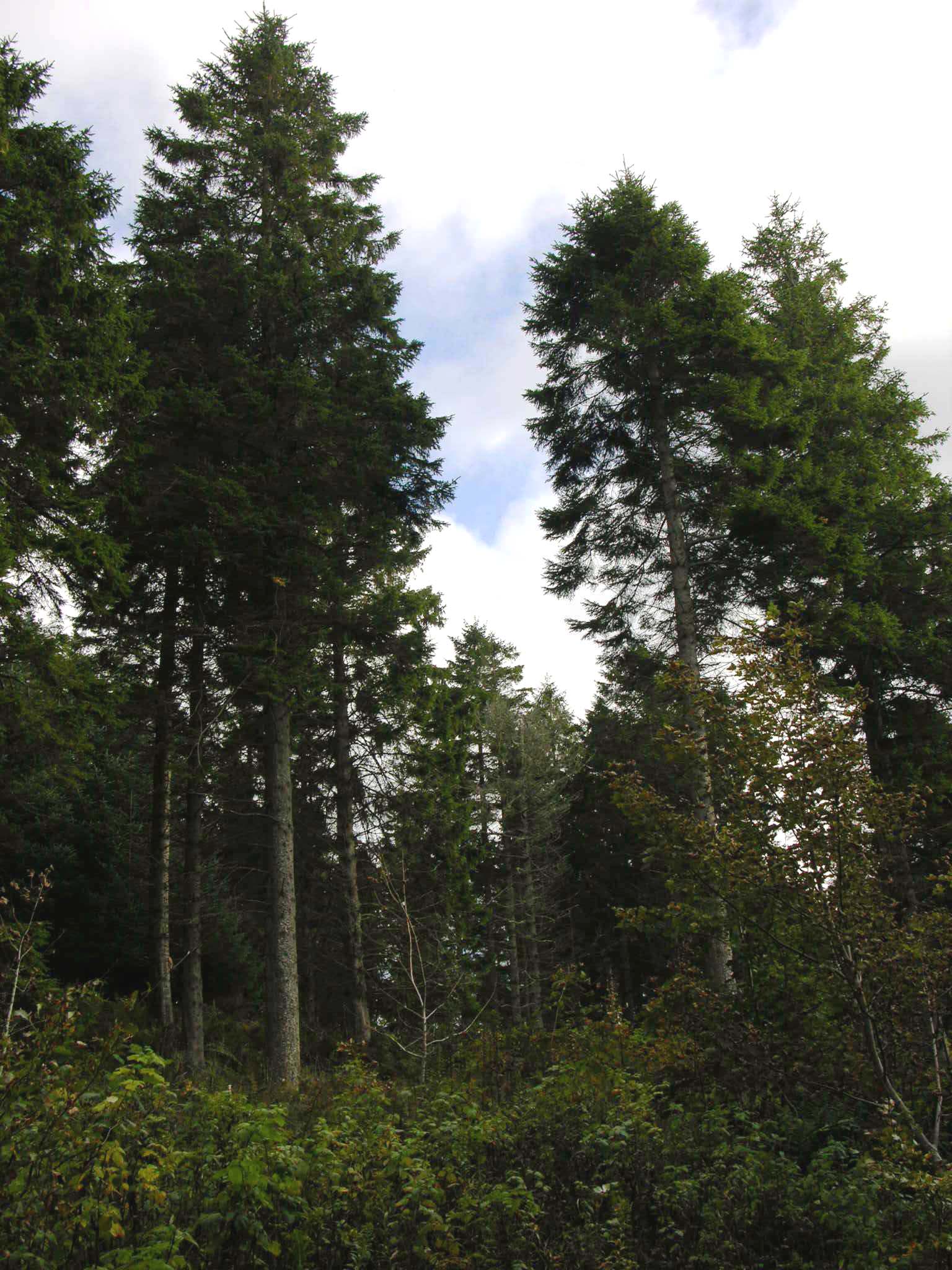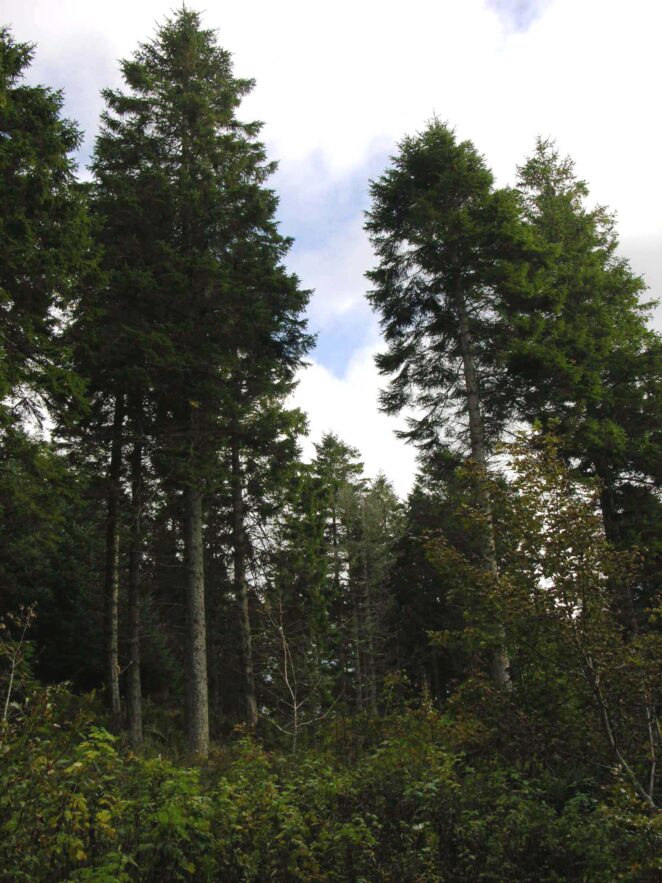Case-study /
Adaptive forest management at the Glentress Trial Area


Continuous Cover Forestry at Glentress
Continuous Cover Forestry (CCF) is an approach to forest management that utilises several different silvicultural systems. CCF is supported by the Scottish Forest Strategy which commits to encouraging sustainable approaches to management. In general CCF is defined as having a continuous canopy with two or more distinct layers, favouring natural regeneration and encouraging species diversity. In the UK it is a relatively recent approach to management and is being employed for several reasons, one of which is that it has potential benefits, in the face of climate change, to clearfell-replant management.The Glentress Trial area represents one of the oldest examples of transformation to CCF in the UK.
The main aim of the Glentress Trial Area is to study the transformation of even-aged plantations to a permanently irregular structure using group selection. It was established in 1952 by Professor Mark Anderson, who was then Head of the Forestry Department at the University of Edinburgh, and Forestry Commission Scotland. When the Trial Area was established in 1952 most of the plantations were 20 to 30 years old. The 117 ha area was divided into six Blocks and the plan was to transform the area over a 60 year period by felling and regenerating groups totalling two hectares in each Block every six years.
Since 2008, Forest Research has assumed responsibility for the research aspects of the Trial Area and work closely with Forestry Commission Scotland on this project. Progress towards transformation has been good although the initial aim of having a fully developed irregular structure by 2012 has not been achieved. The main method of transformation since 1952 has been group felling and planting. However, recently the approach has changed with a more balanced approach between felling trees (from throughout the diameter distribution using mainly crown thinning) and regeneration (using planting in open/poorly stocked areas and some natural regeneration elsewhere).Recent articles document the history of the stand and how the transformation has progressed (Mackintosh et al. 2013; Kerr et al. 2010).
As an approach to management CCF offers potential increases in resilience to extreme weather events and pathogens. It is anticipated that with climate change there will be an increased risk associated with forest pathogens (La Porta et al., 2008). As CCF commonly utilises a mixture of species it slows the spread of species-specific pathogens and ensures the entire stand is not affected (Nyland, 2003; Stokes and Kerr, 2009). Similarly, as CCF systems have at least one canopy layer with a developed understory they are more resilient in the face of storm damage such as wind-throw which is also predicted to increase as a result of climate change (Fuhrer et al., 2006). This occurs as advanced regeneration beneath the canopy layer can take the place of the wind-thrown canopy, thereby ensuring a quicker and cheaper recovery.
References
Kerr, G., Morgan, M., Blyth, J.F. and Stokes, V. (2010a) Transformation from even aged plantations to an irregular forest: the world’s longest running trial area at Glentress, Scotland.Forestry. 83, 329-344.
Fuhrer, J., Beniston, M., Fischlin, A., Frei, C., Goyette, S., Jasper, K. and Pfister, C. (2006) Climate risks and their impact on agriculture and forests in Switzerland. Climatic Change. 79, 79-102.
La Porta, N., Capretti, P., Thomsen, I. M., Kasanen, R., Hietala, A. M. and Von Weissenberg, K. (2008) Forest pathogens with higher damage potential due to climate change in Europe. Canadian Journal of Plant Pathology. 30, 177-195.
Mackintosh, H., G. Kerr and T. Connolly. 2013. Structural change during transformation in the Glentress Trial –an update. Scottish Forestry 67(3): 14-23.
Stokes, V. and Kerr, G. (2009) The evidence supporting the use of CCF in adapting Scotland’s forests to the risks of climate change. Forestry Commission, Edinburgh.
